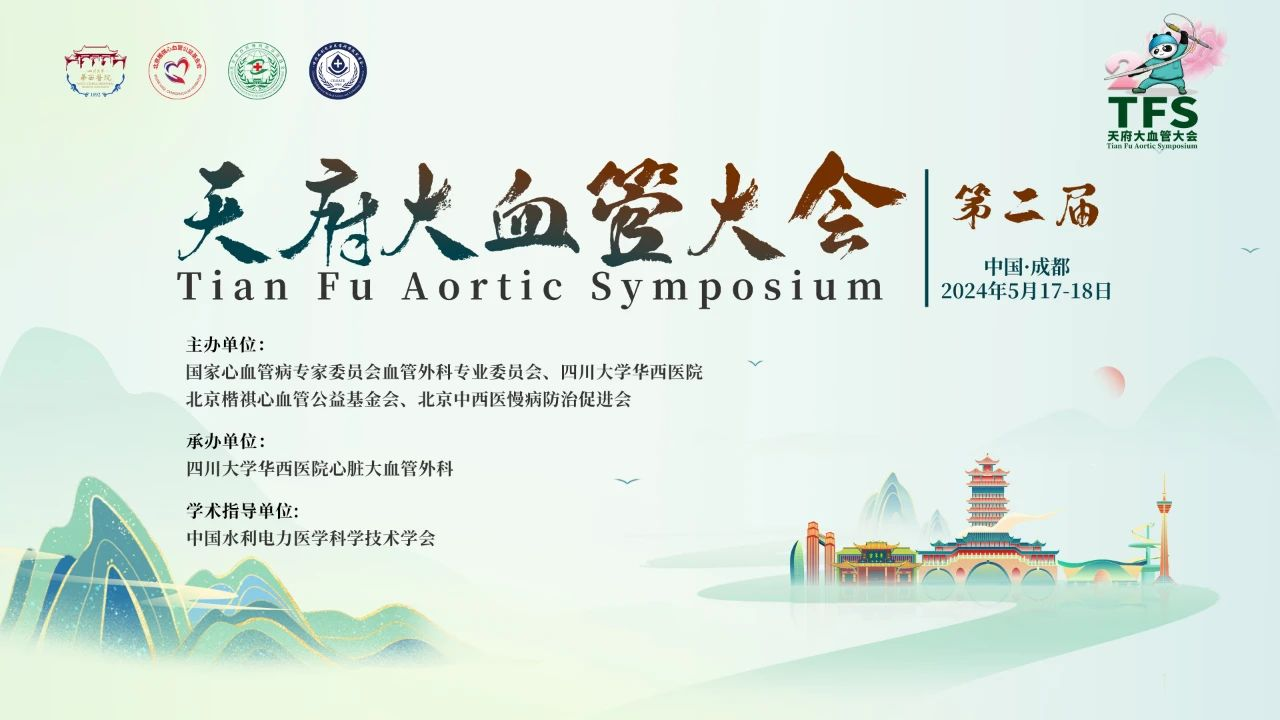
The 2nd Tianfu Vascular Conference (TFS 2024) was successfully held on May 17-18, 2024, in Chengdu. From the pinnacle of medical science, we foresee the future of the vascular discipline, recognizing the immense responsibility and honorable mission ahead. As members of the vascular field, we are tasked with advancing the discipline and improving diagnostic and treatment standards. In the future, we will analyze the content of TFS lectures to help you understand the most cutting-edge vascular treatment experiences.
At this conference, Professor Liu Zhao, along with Dr. Liu Chen and Dr. Li Xiaoqiang from the Department of Vascular Surgery at Nanjing Drum Tower Hospital, affiliated with Nanjing University Medical School, presented a multicenter study on the complications and prevention of F/B-EVAR (fenestrated/branched endovascular aneurysm repair). This study focused on the use of 3D printing to guide PMSG (personalized stent-graft) for comprehensive endovascular treatment of thoracoabdominal aortic diseases.
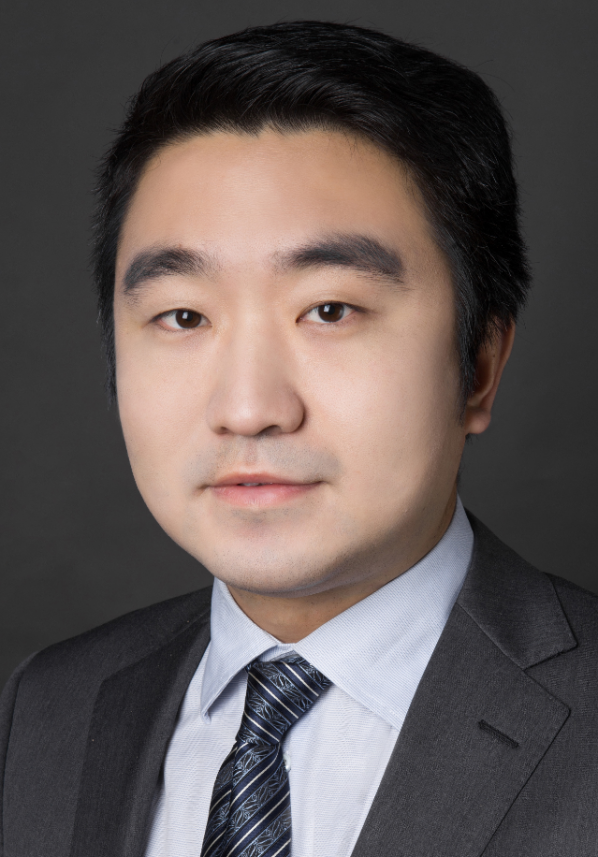
1. Current State of Thoracoabdominal Aortic Diseases and Introduction to F/B-EVAR Technology
Traditional treatment methods for thoracoabdominal aortic diseases include open surgery and hybrid surgery, which are often associated with high complication and mortality rates. The F/B-EVAR technology, utilizing 3D printing for precise branch opening positioning, offers a hemodynamically physiological and technically controllable surgical option. This method shows higher mid- to long-term patency rates and lower mortality and complication rates compared to traditional surgeries.
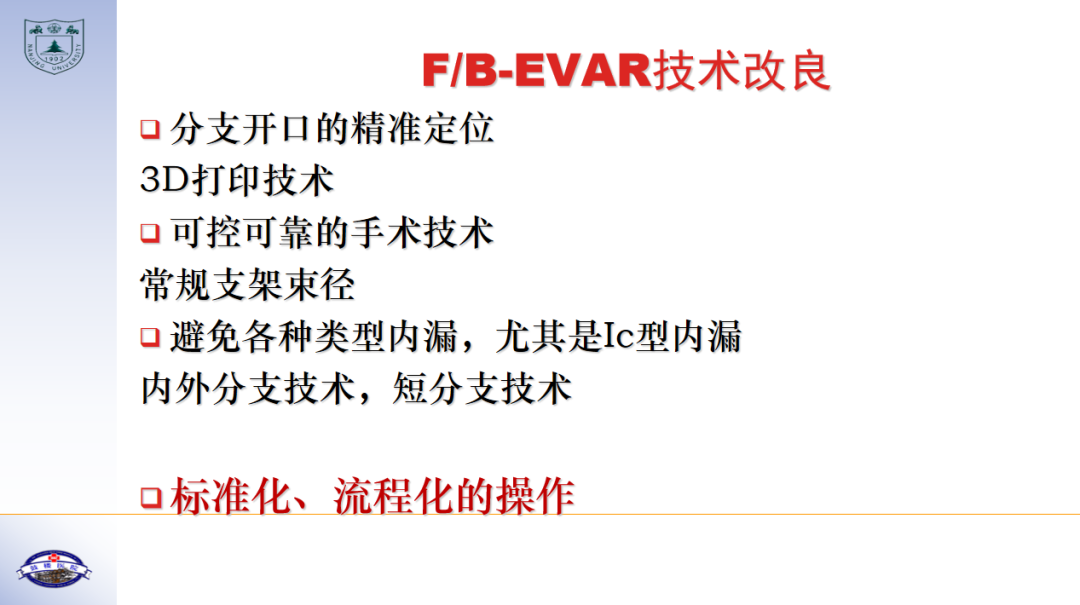
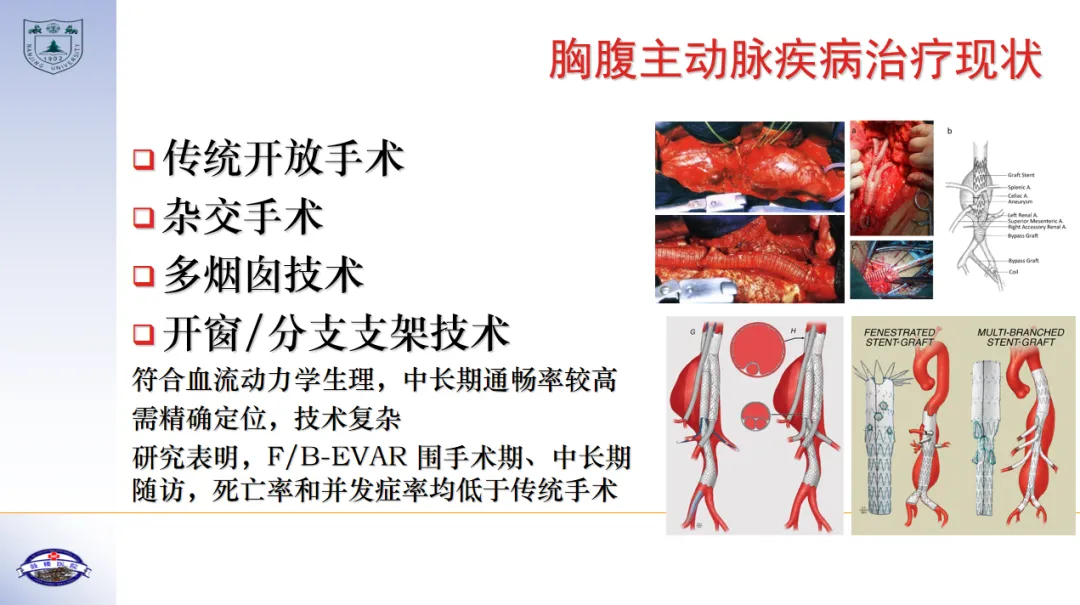
2. Study Overview and Major Findings
The study included 362 patients with follow-up periods ranging from 3 to 66 months. Using precise 3D printing technology and standardized surgical procedures, the research team successfully reconstructed 1,103 branch vessels with a success rate of 99%. The study revealed a surgery-related mortality rate of 3.0% with effective management of complications such as renal function impairment and cerebral complications.
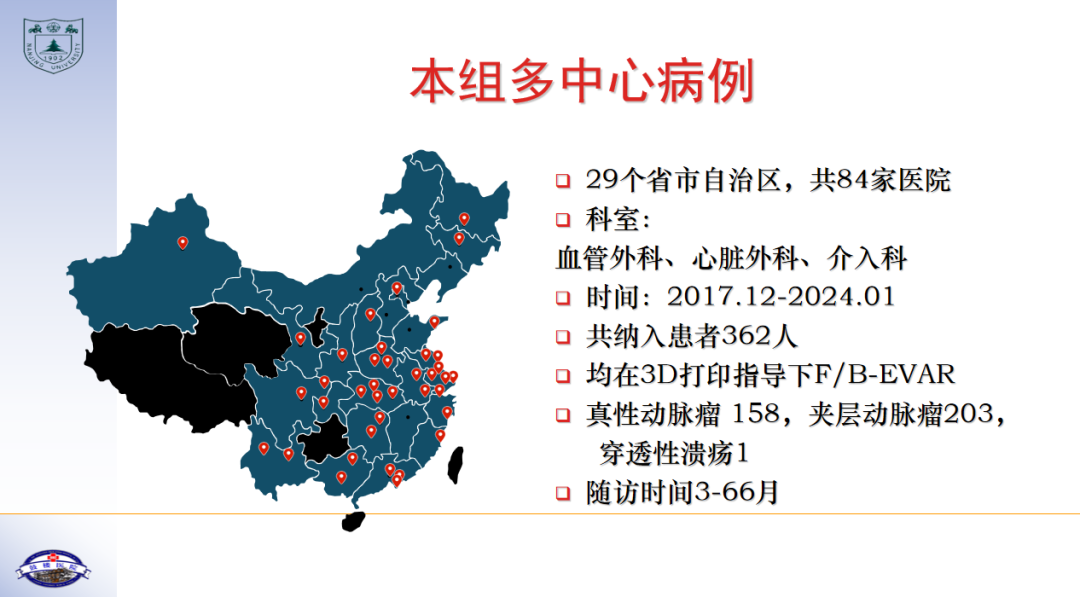
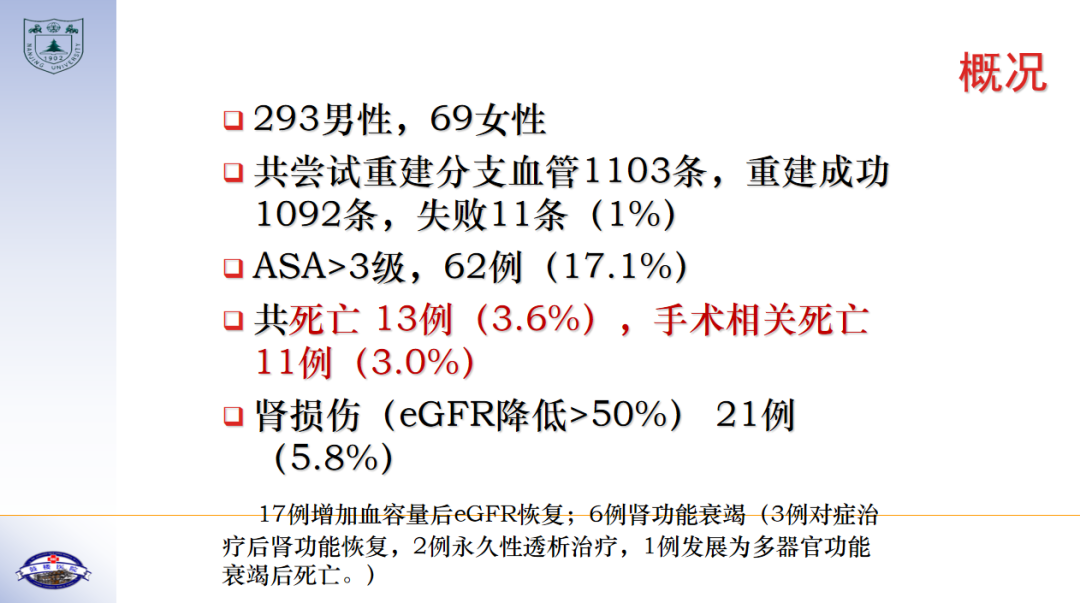
3. Complication Prevention Strategies
Professor Liu Zhao’s team emphasized the importance of preventive measures for complications, including the use of large-caliber long sheaths, surgical bypass, and endovascular bypass techniques with covered stents. Additionally, 3D printing played a crucial role in ensuring precise positioning of the main stent, significantly reducing human error during surgery.
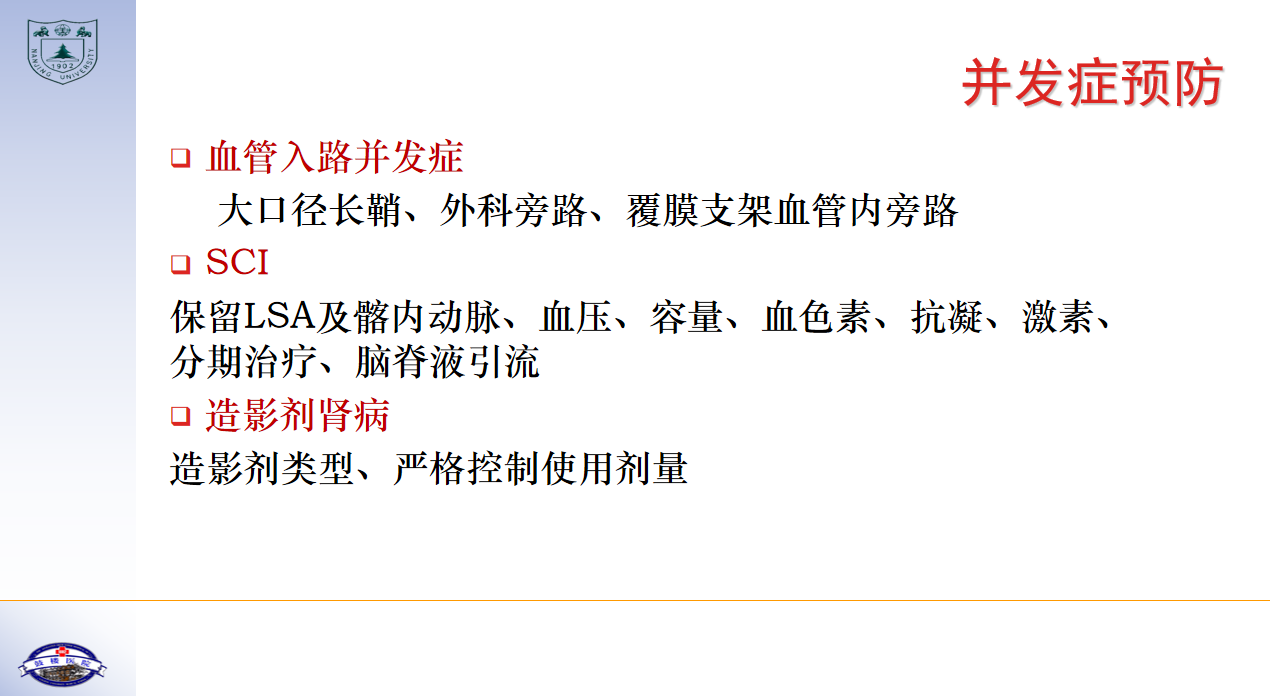
4. Summary and Outlook
The F/B-EVAR technology provides a safer and more effective treatment option compared to traditional surgery, especially for patients with complex thoracoabdominal aortic diseases. Despite the long learning curve and the need to accumulate experience, the long-term outcomes are promising for improving patient quality of life and survival rates.
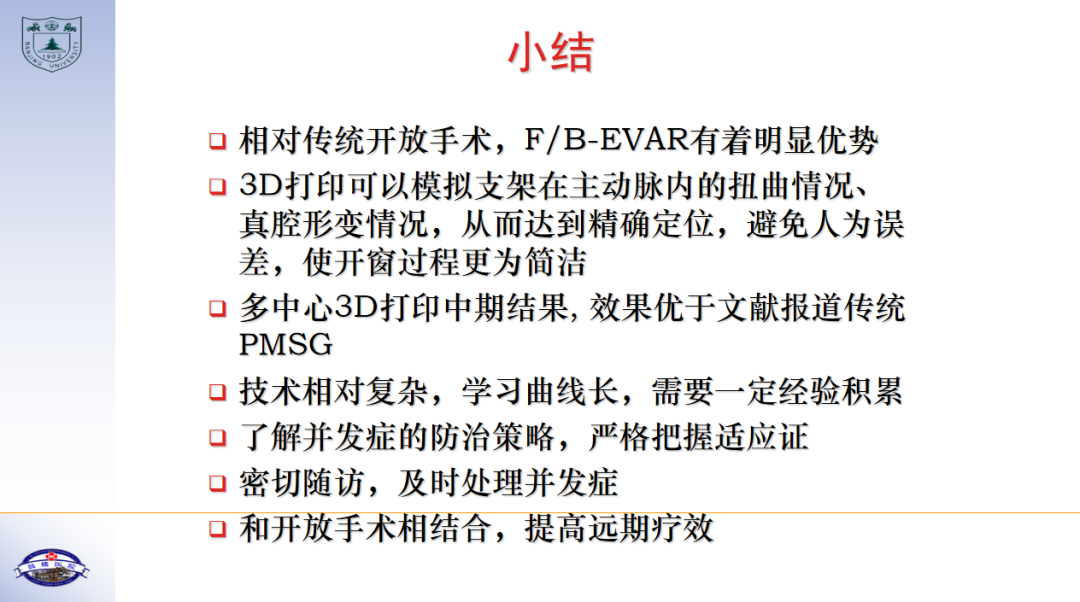
5. Contact Us
We encourage medical professionals to engage in further discussion and exchange on TEVAR technology or topics related to the Tianfu Vascular Conference. If you have any questions or interests, please leave a comment or contact us via email at endovascluar@simtomax.cn. Thank you for your attention. Let’s work together for health!


